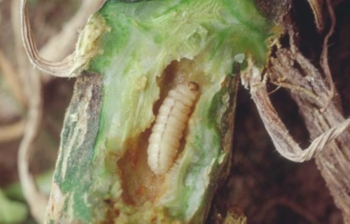This fall, the State Climate Office invited three students from Centennial Campus Magnet Middle School to learn more about weather and climate and complete a research project similar to those done by SCO’s scientists. The three students were eight-graders Ribhi Triesh and Savannah Mosley, and sixth-grader Zach Flatt.
The students met every Monday for two hours beginning in early September and ending in mid-November. Each session was broken into two one-hour segments. During the first hour, the students participated in lab exercises where they took cloud observations, wired instruments used to make weather measurements, quality controlled data, and did hands-on demos including making a cloud in a bottle. The students also toured the National Weather Service Raleigh’s office to learn about forecasting and weather warnings.

The second hour of each session was focused on their project, which was researching the relationship between climate and pumpkins. The project was split into two parts. First, the three students investigated the average last date of air and soil temperature based on a few categories. As pumpkins do not grow at temperatures below 50°F, the three students looked at data (specifically air temperature and soil temperature) from multiple ECONet stations across North Carolina to determine whether you can plant pumpkins earlier in the eastern part or western part of the state. Their results found that you can plant pumpkins earlier in the eastern part of the state roughly two to three weeks earlier than the western part of the state.

The second part of the project looked at the time frame to start monitoring for the squash vine borer, a pest that inhabits the stems of pumpkins during the harvest season. The squash vine borer begins to do damage to pumpkins after 1000 growing degree days have accumulated from a start of the calendar year. Adult squash vine borers lay eggs that hatch around 1000 GDDs; the hatched larvae bore into the stems of pumpkin plants, eating tissue and causing damage.
To look for the start time for monitoring, the students calculated growing degree days (using average daily temperature) throughout the year at multiple ECONet stations and computed an average date to begin monitoring for the pest. The students found that the pest appears earlier in the eastern part of the state by an average of one month compared to stations in the western part of the state.
